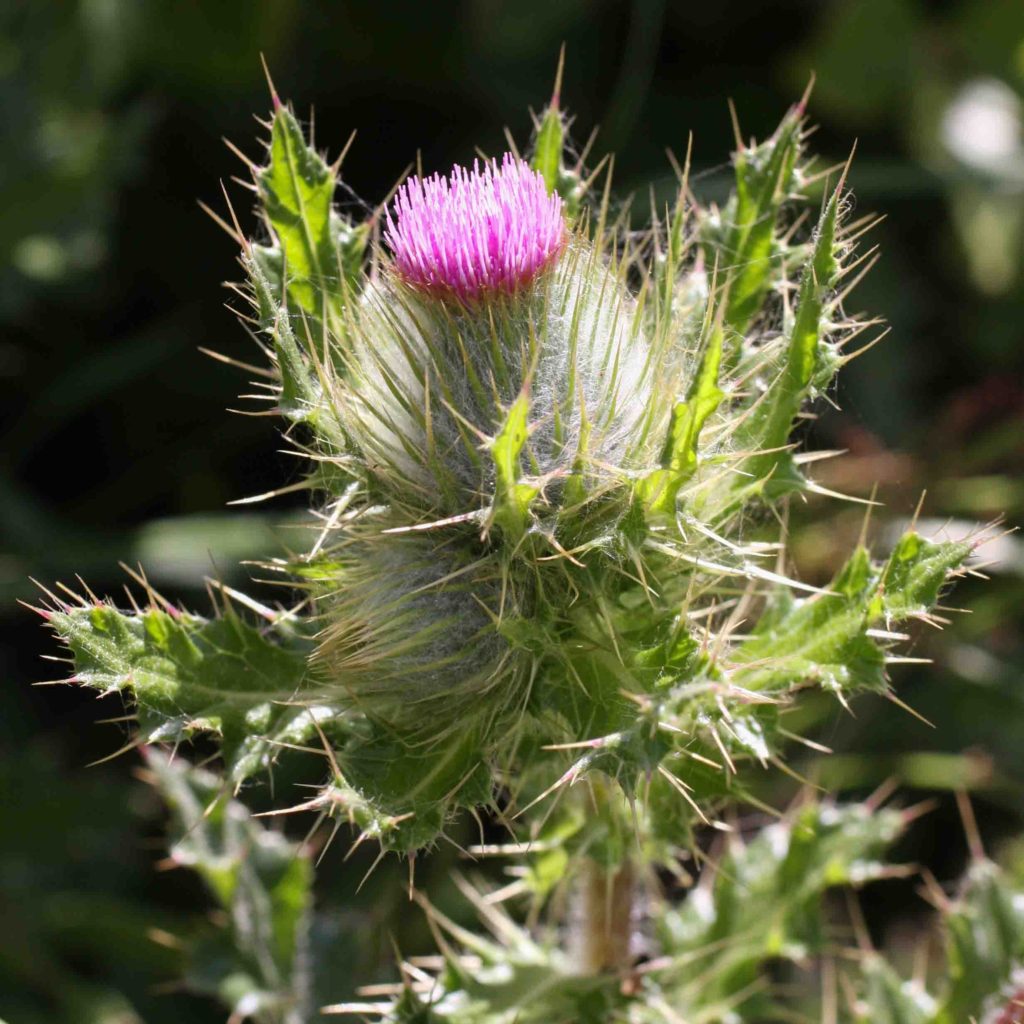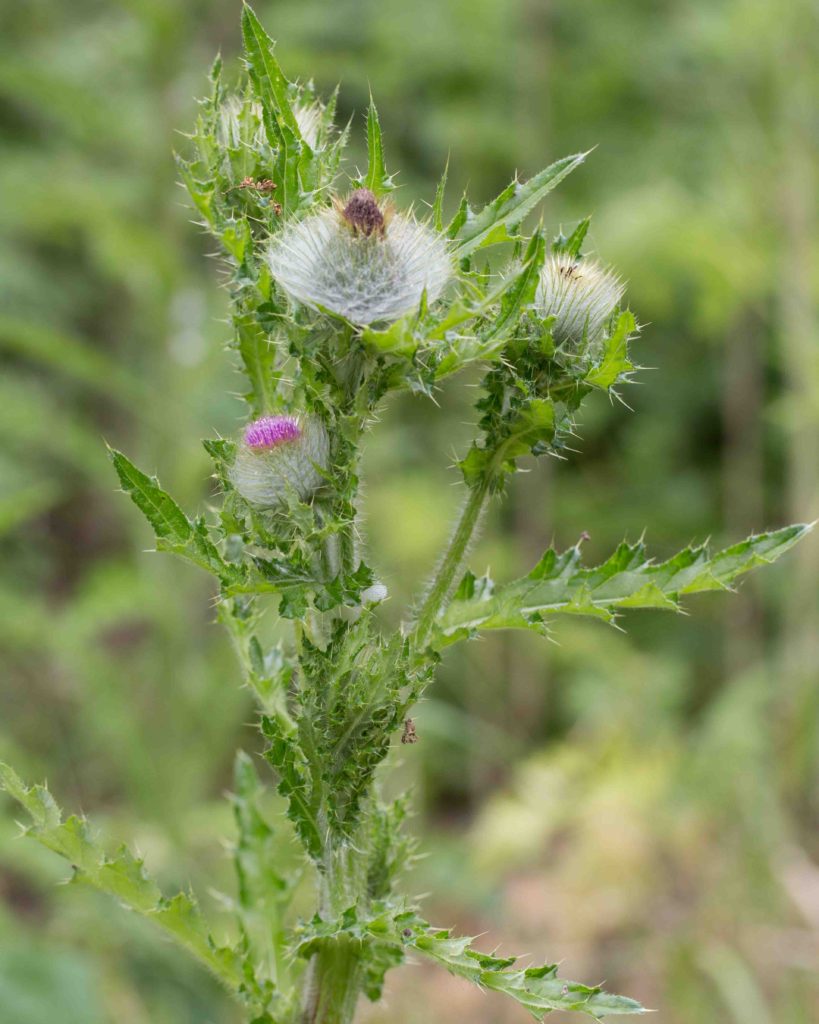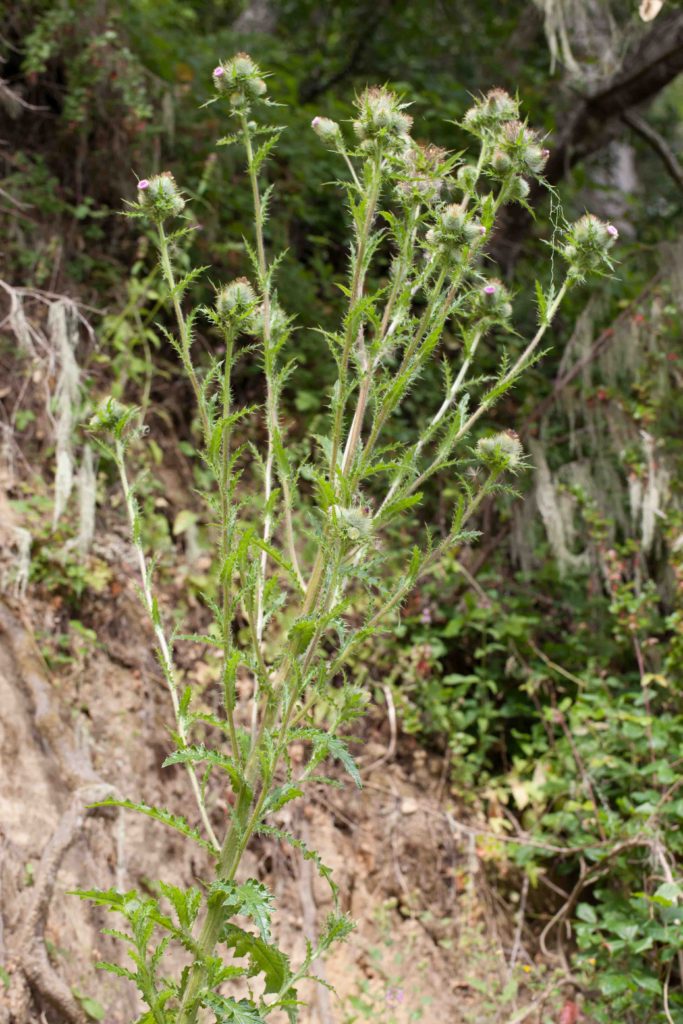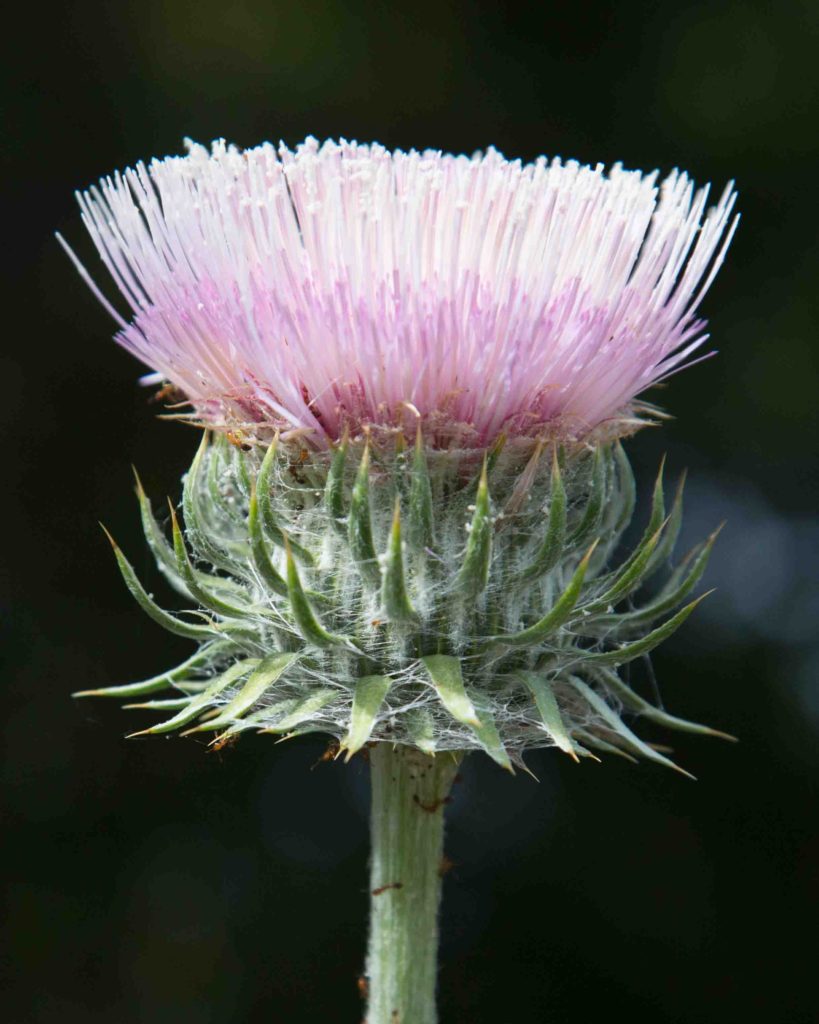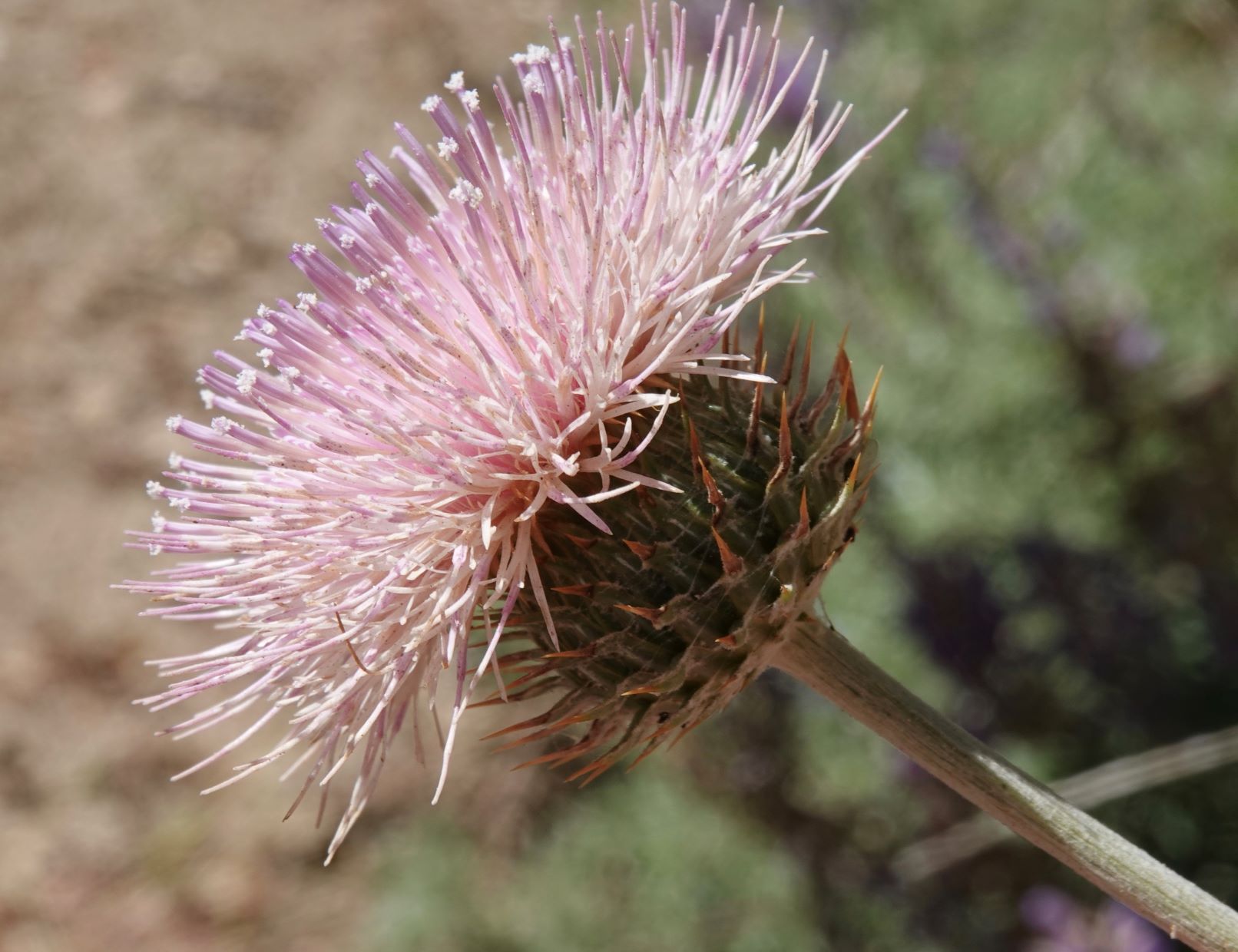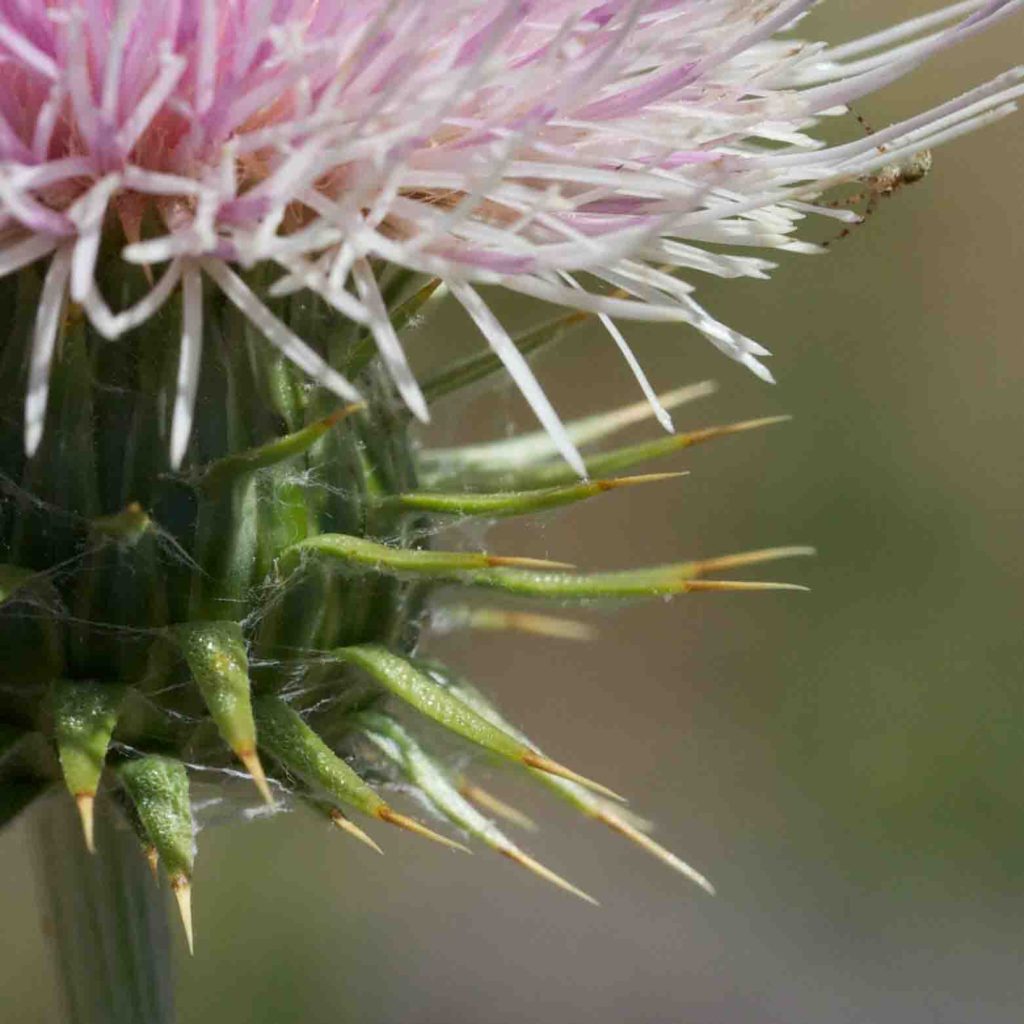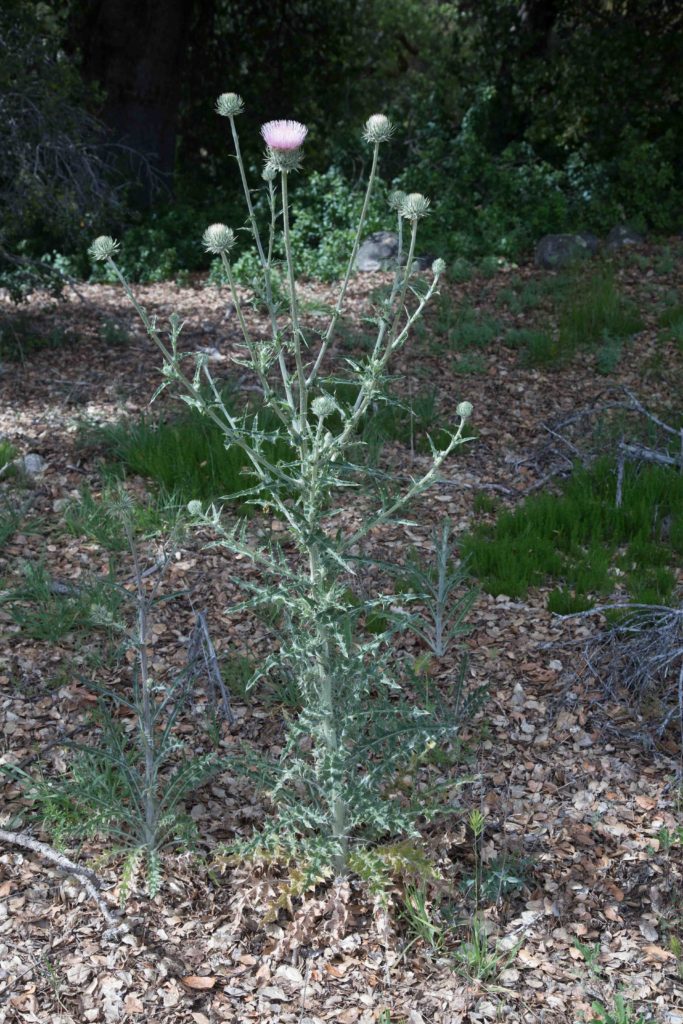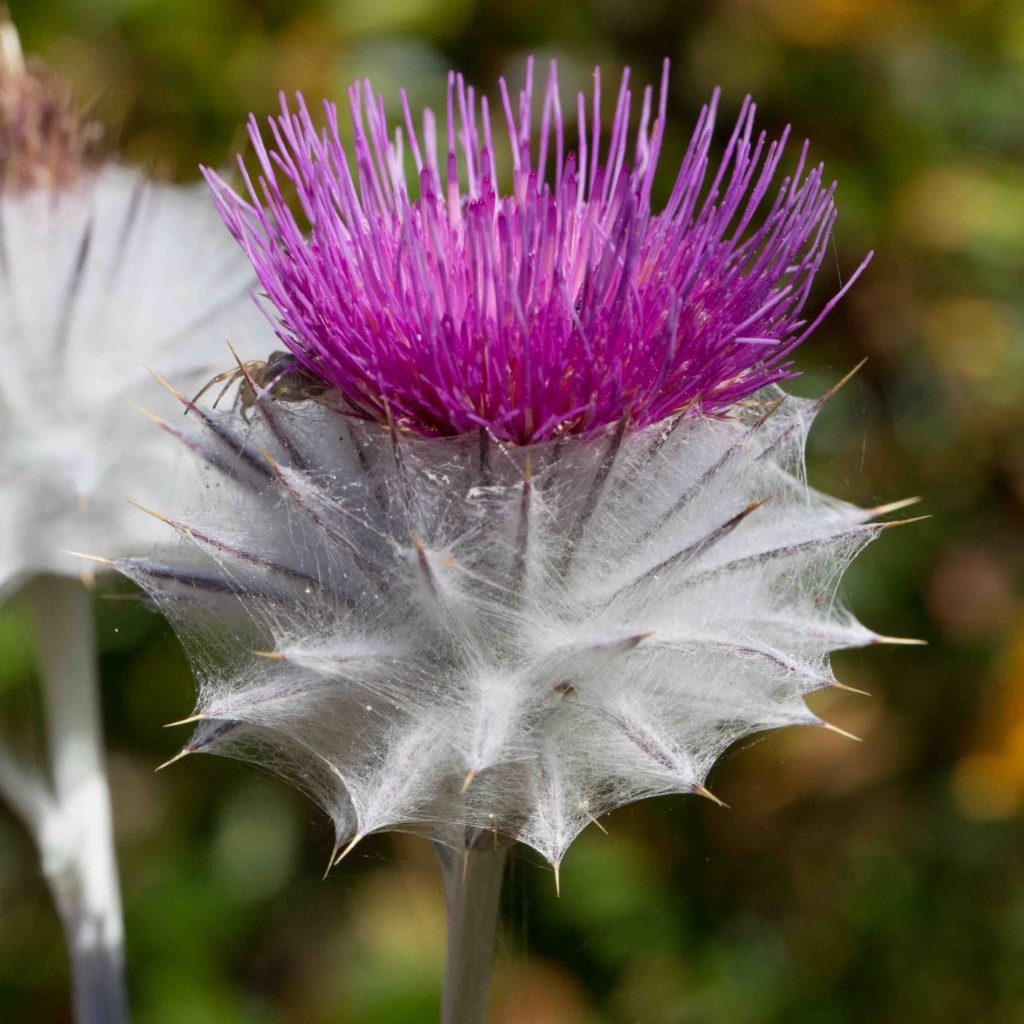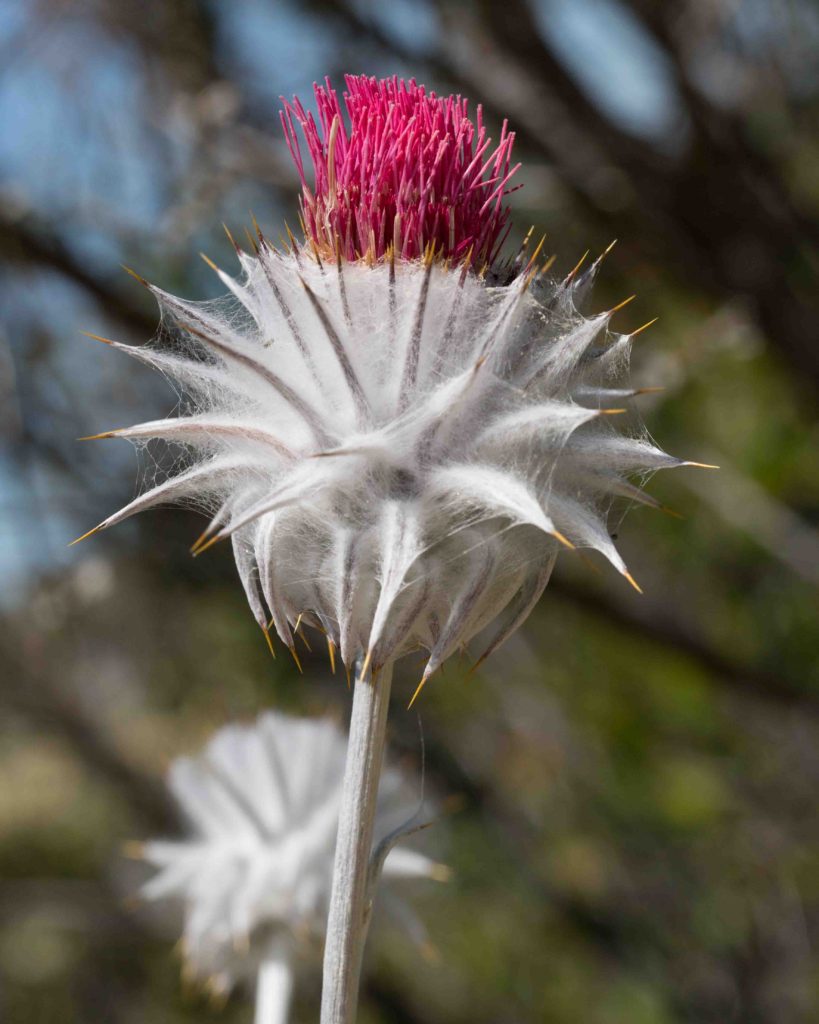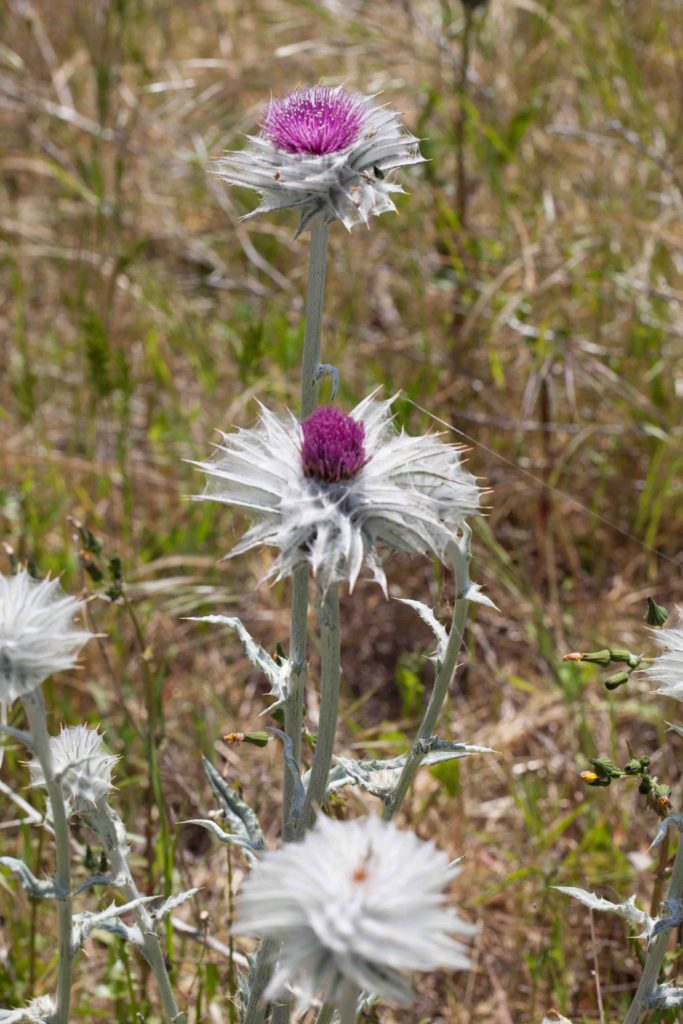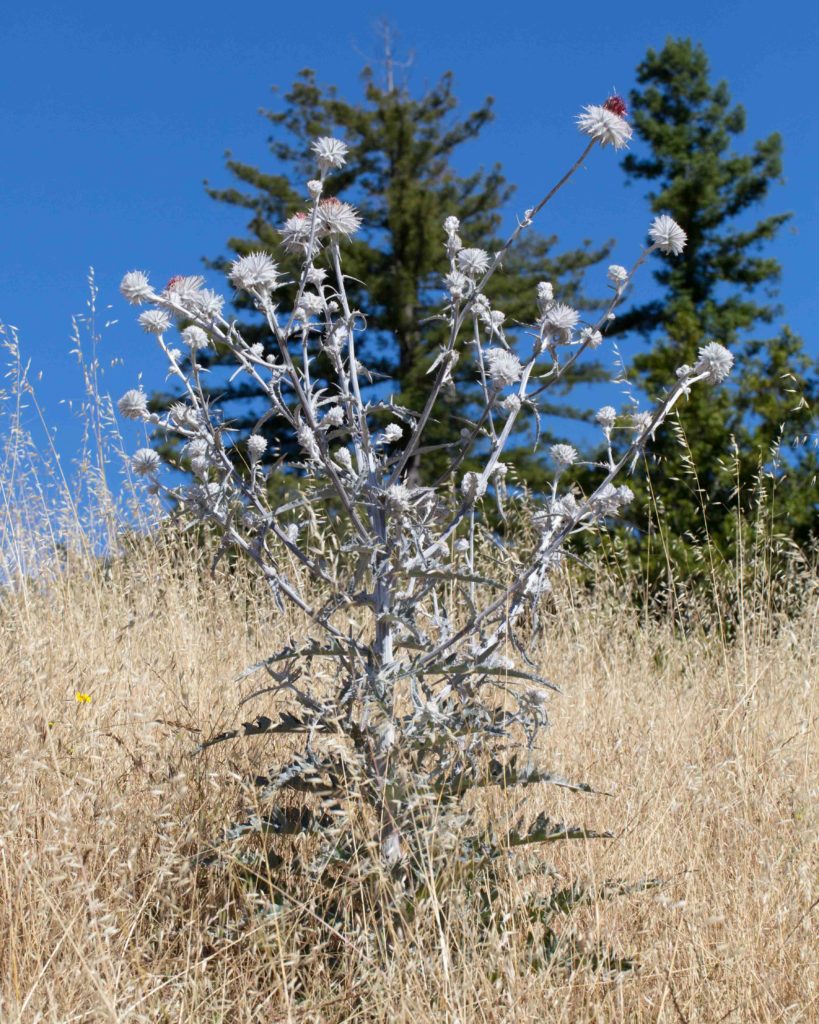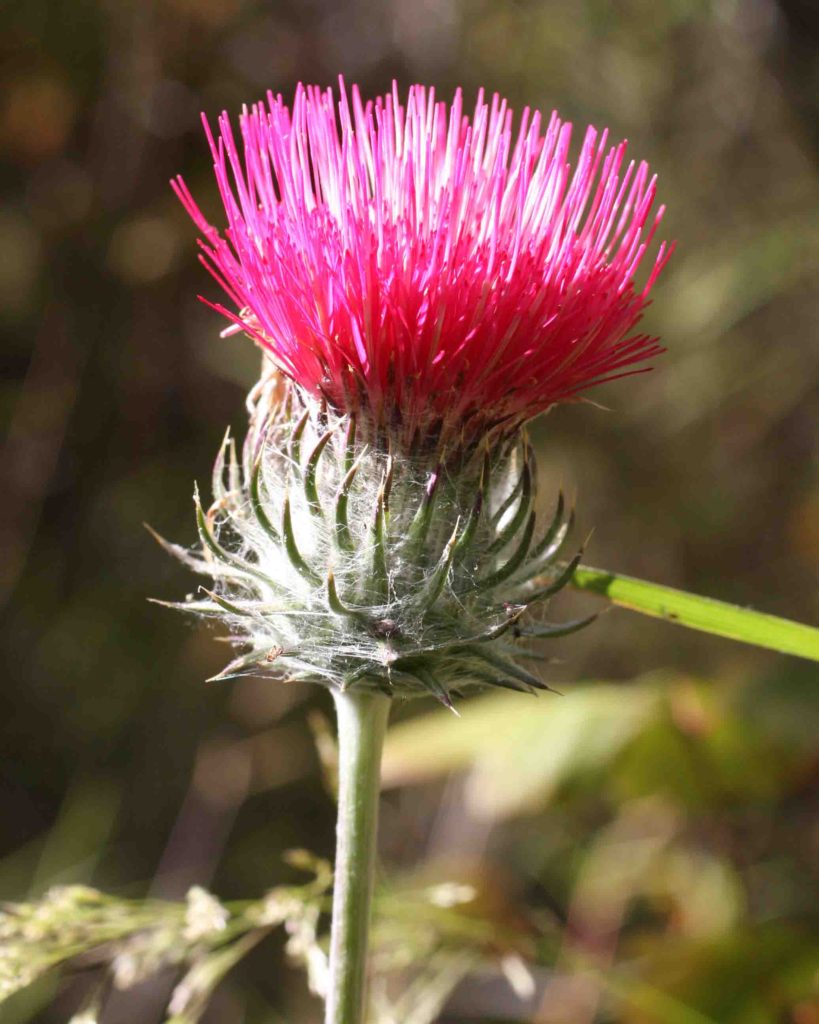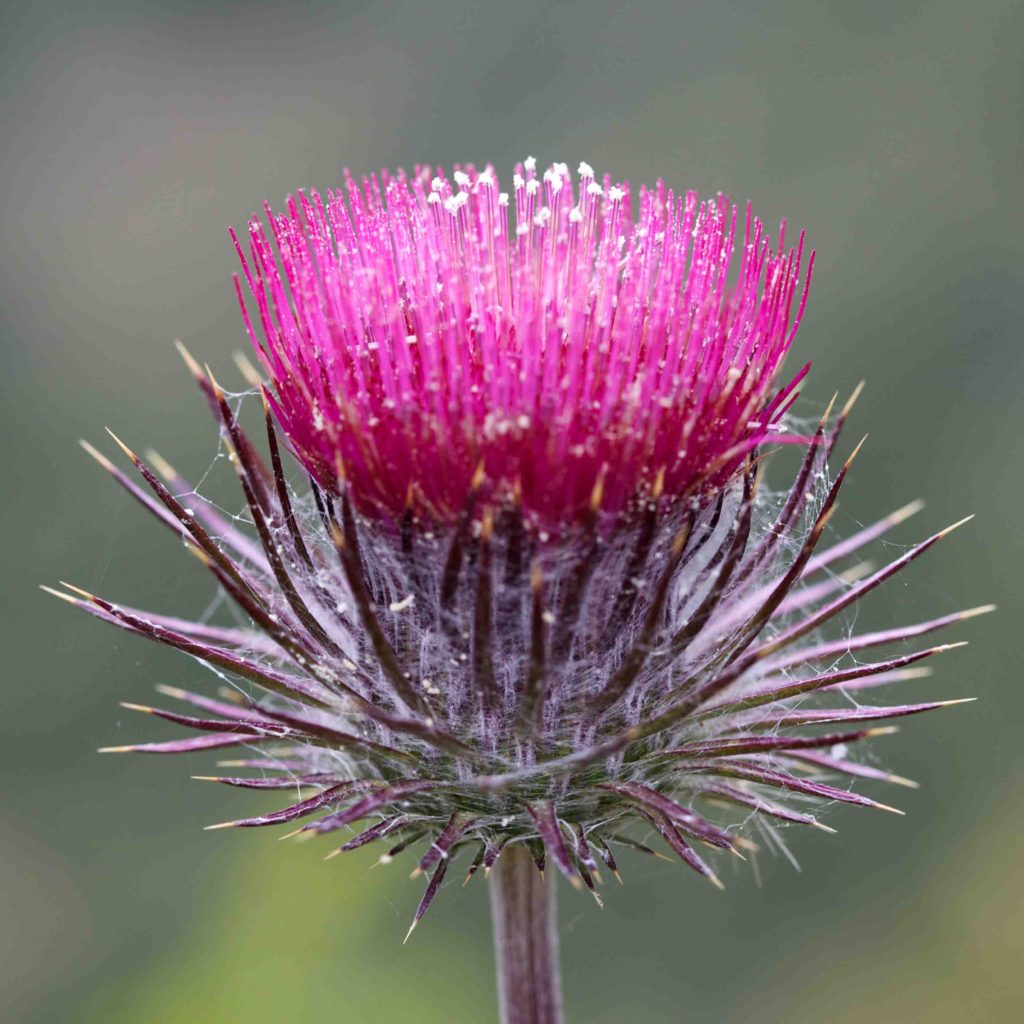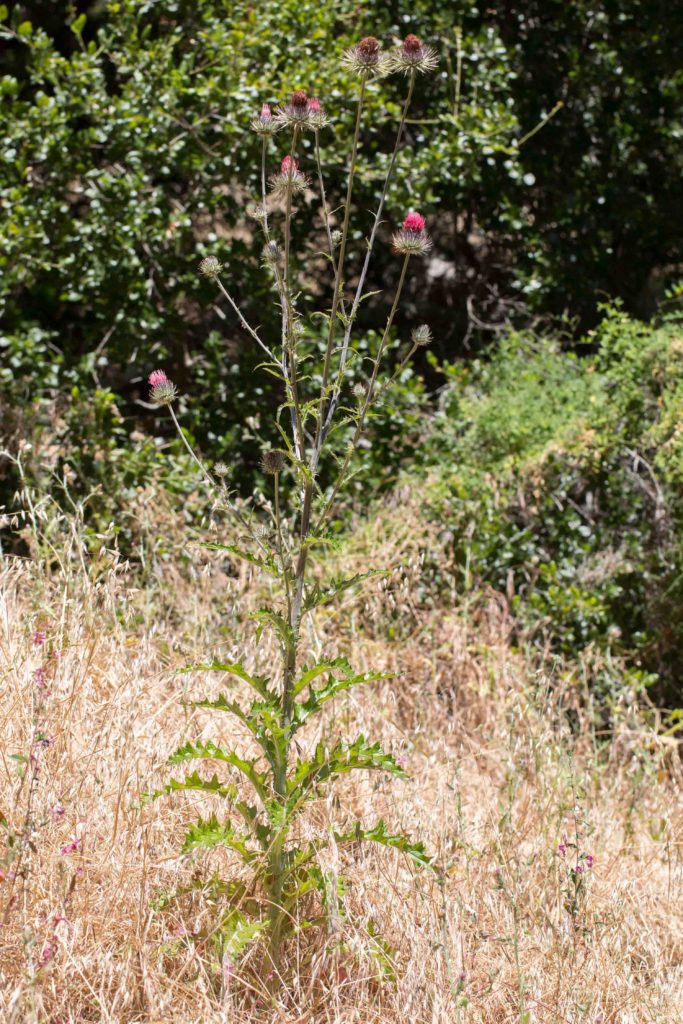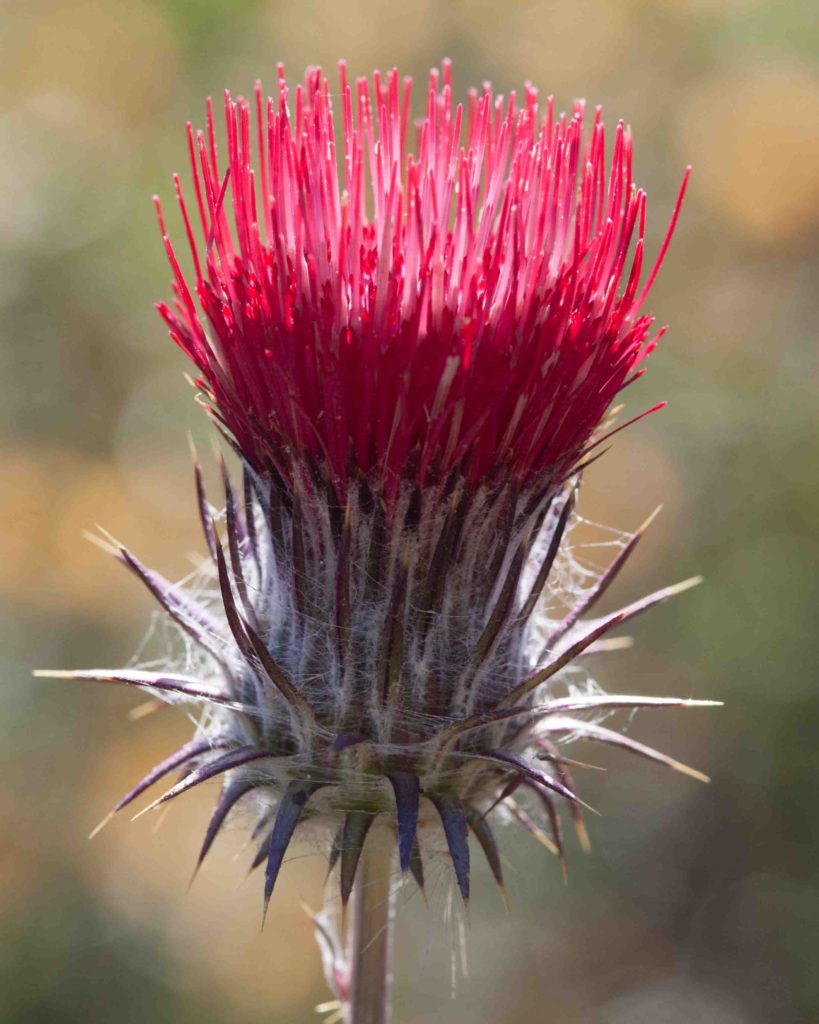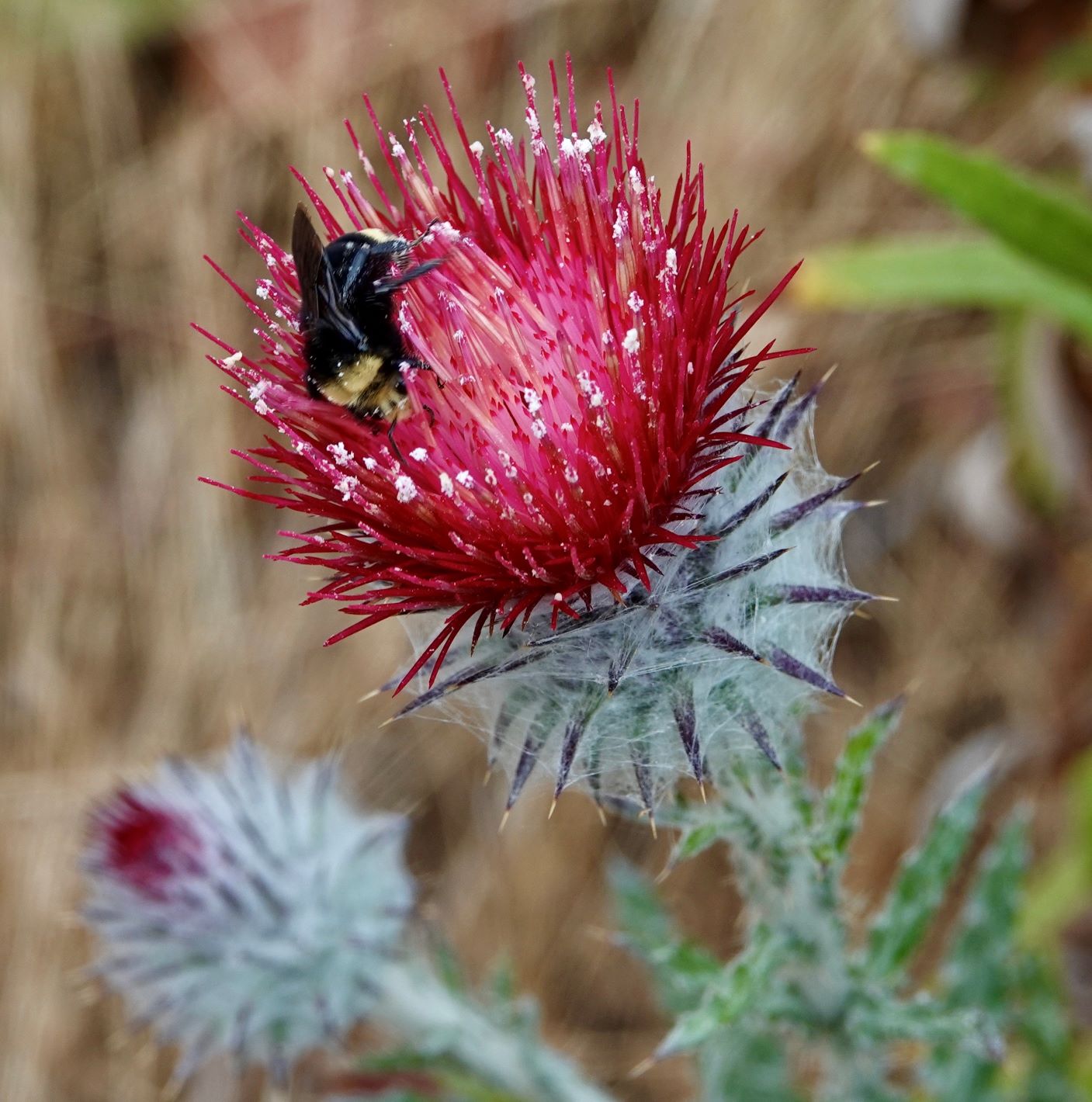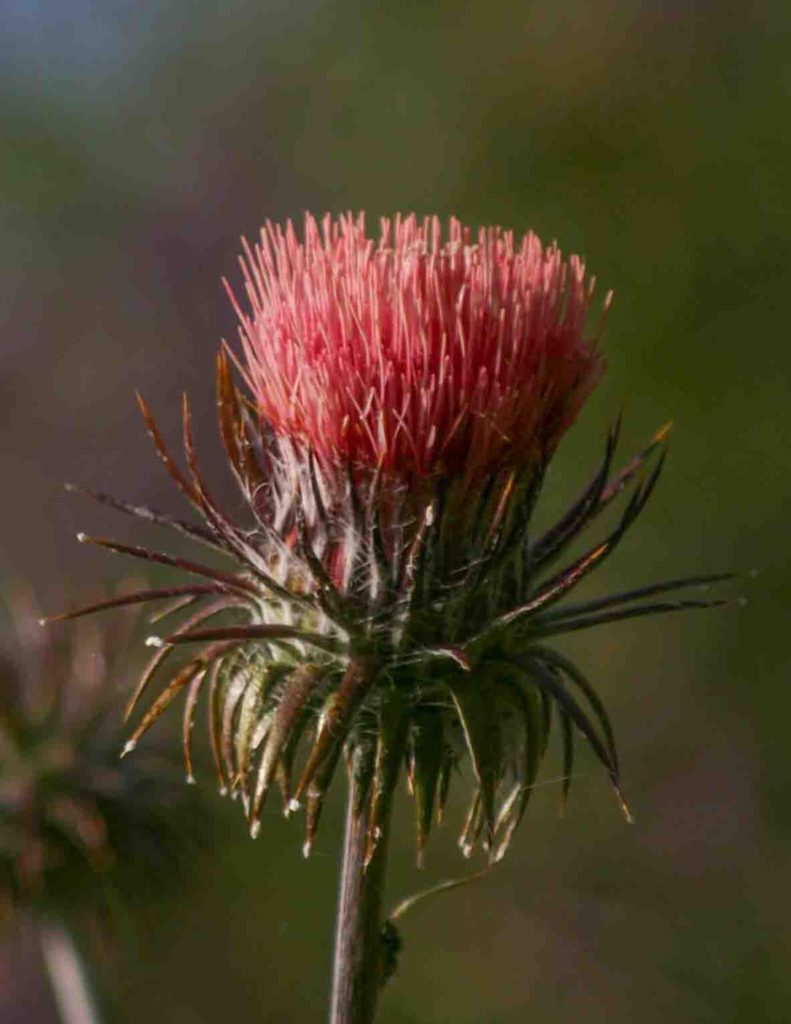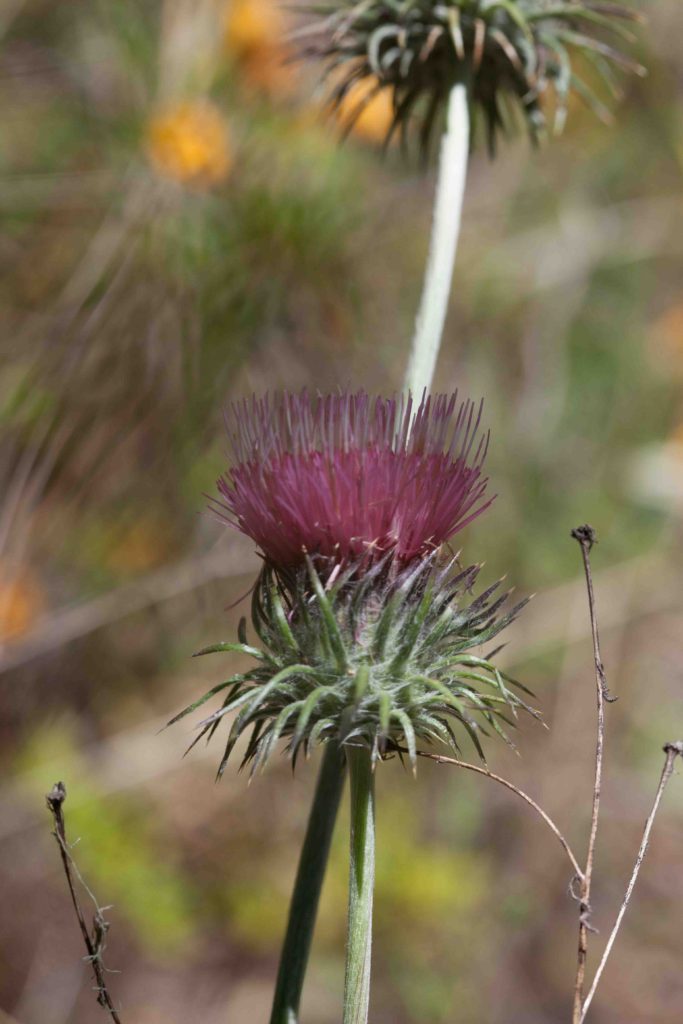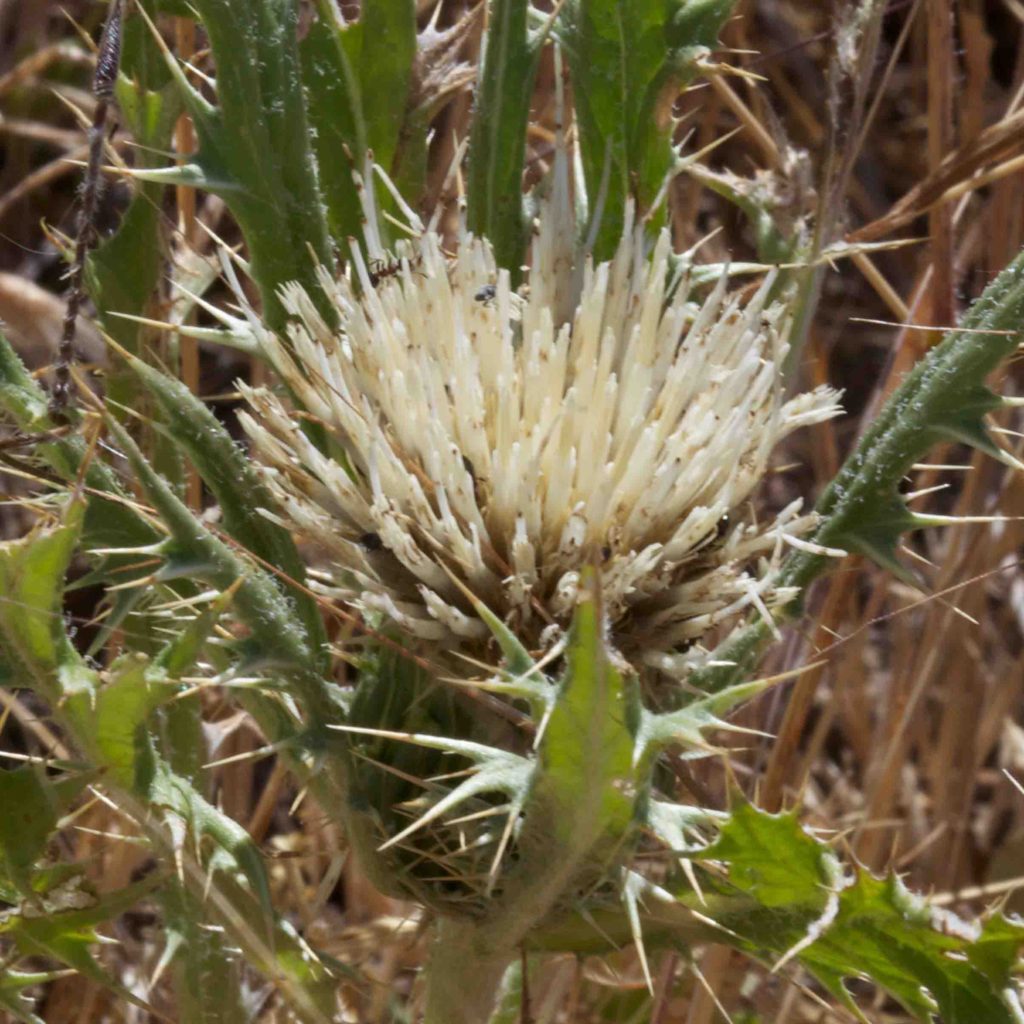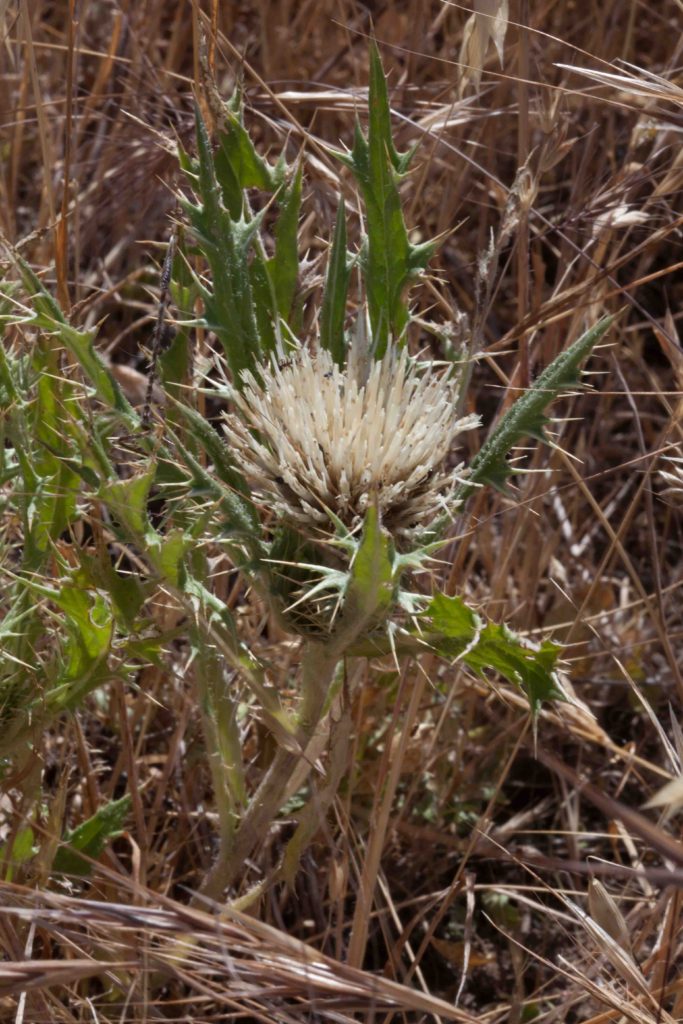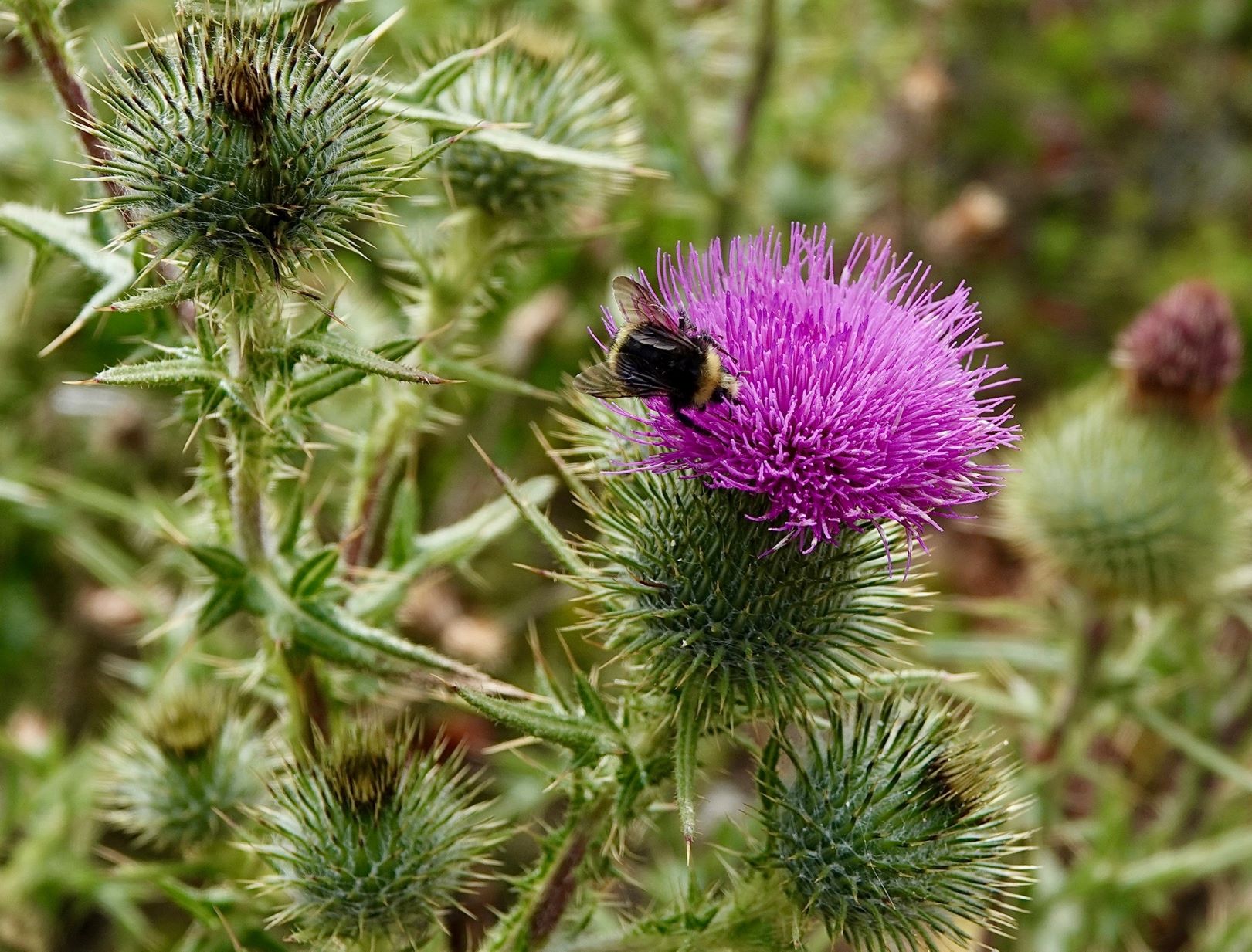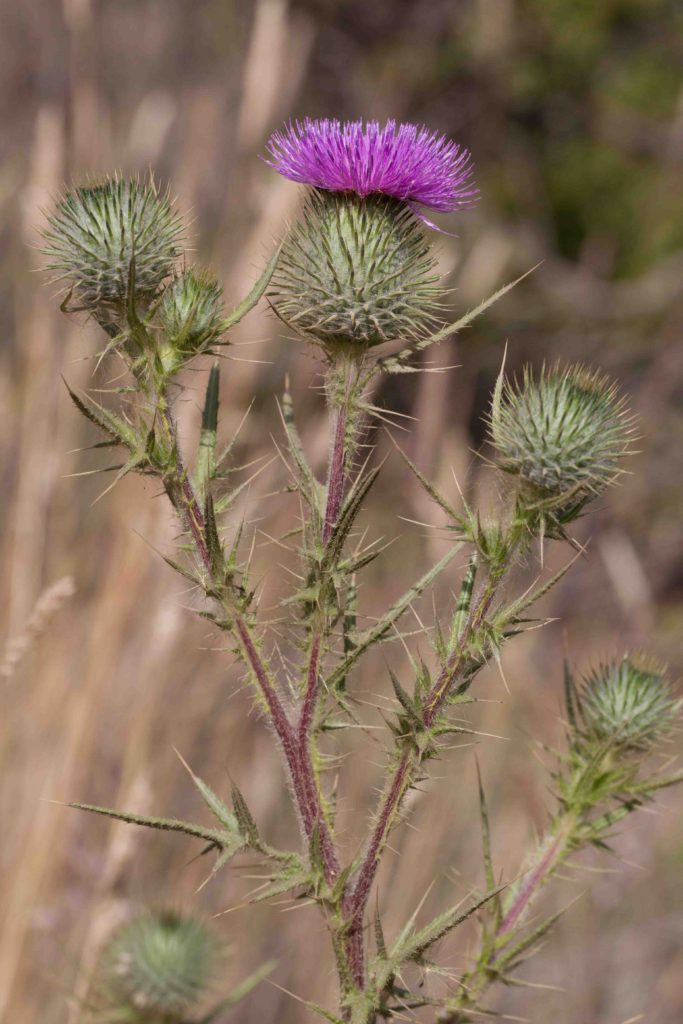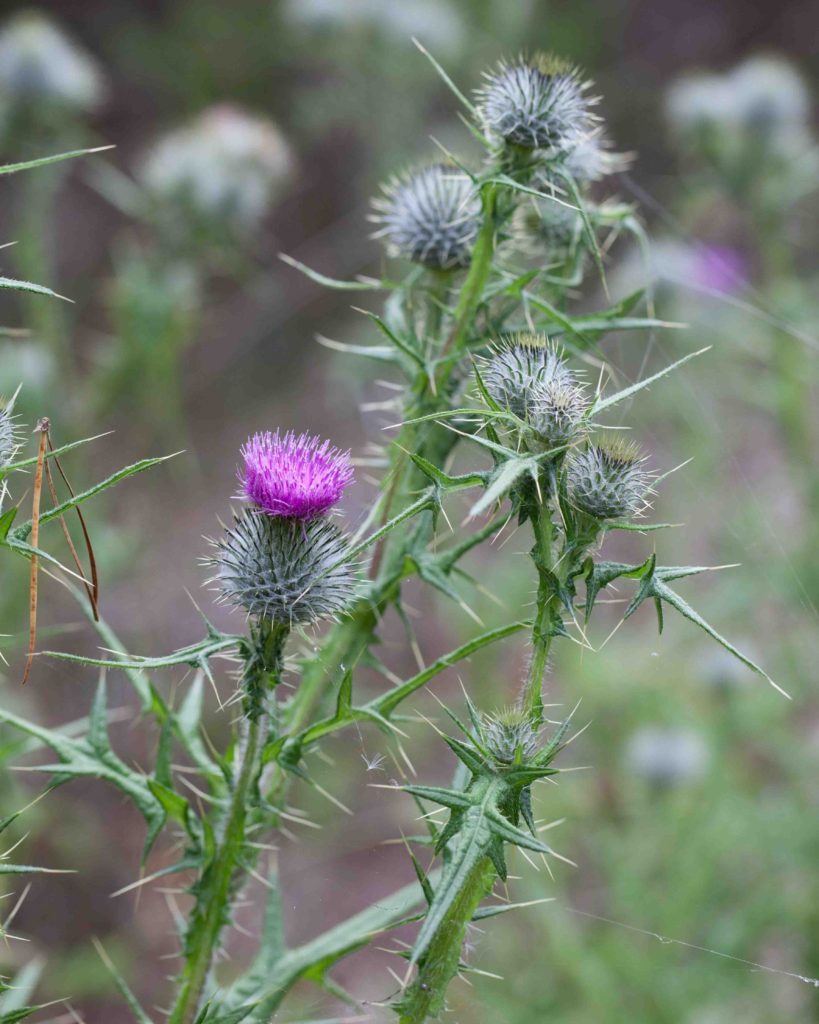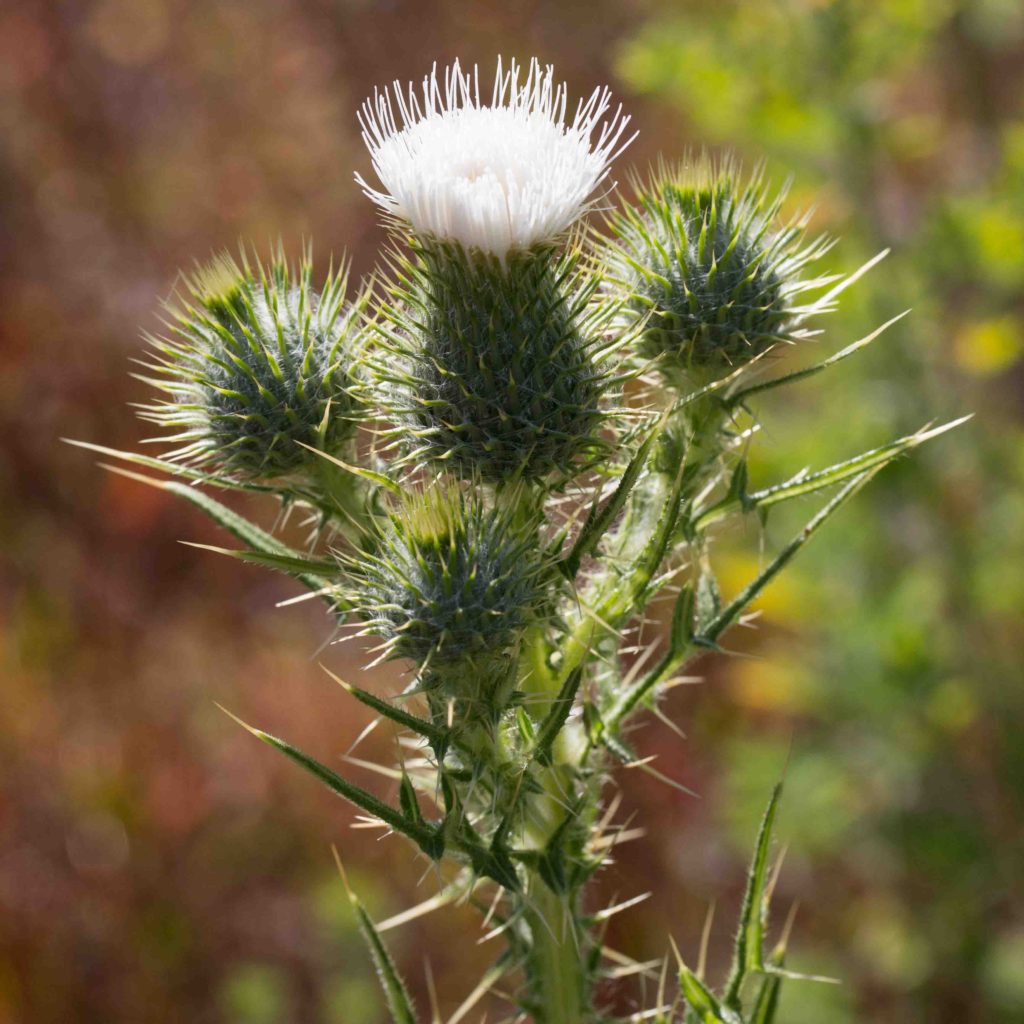Asteraceae: Sunflower Family – Cynareae (Thistle) Tribe: Cirsium
The Sunflower family is a very large family with over 25,000 members. Botanists subdivide the family into a number of tribes, of which 14 are present in Monterey County. The Cynareae (Thistle tribe) has 8 genera present in California. This page shows the genus Cirsium, most of which are native.
Indian Thistle – Cirsium brevistylum
Blooms:
Mar–Aug
Plant Height:
0.3–3.5 m
Flower Size:
Large
Origin:
Native
Habitat:
Moist, shaded or partly-shaded places
Notes:
The most characteristic feature of this thistle is its leaves, which immediately subtend and sometimes surround the flower head. This makes it easy to distinguish from the cobwebby thistles (Cirsium occidentale, see below) which have long, leafless peduncles. Photo #2 by CJH.
California / Bigelow Thistle – Cirsium occidentale var. californicum
Blooms:
Apr–July
Plant Height:
0.5–2 m
Flower Size:
Large
Origin:
Native
Habitat:
Dry slopes
Notes:
The varieties of Cirsium occidentale all have more or less densely cobwebby heads and long, generally leafless peduncles. Subtle differences in the form of the phyllaries (all spine-tipped in this genus), the color of the flowers and the degree of cobwebbiness separate them. This variety has a paler head — pink, lavender or white — than the others, which are shades of red. Also, the heads are more loosely clustered on long stems, which may be naked for at least 15 cm below the heads. The phyllaries tend to be spreading or upward-curving like those of Cobwebby Thistle (var. occidentale, see below), and range from glabrous to densely cobwebby, sometimes with a sticky resinous ridge. Photo #2 by CJH.
Snowy Thistle – Cirsium occidentale var. candidissimum
Blooms:
Apr–Sept
Plant Height:
0.4–2 m
Flower Size:
Large
Origin:
Native
Habitat:
Dry slopes, generally near coast
Notes:
The varieties of Cirsium occidentale all have more or less densely cobwebby heads and long, generally leafless peduncles. Subtle differences in the form of the phyllaries (all spine-tipped in this genus), the color of the flowers and the degree of cobwebbiness separate them. The red to reddish-purple flowers of this variety are most similar to Venus Thistle (var. venustum, see below), with spreading or down-curving phyllaries. But the leaves, stem and heads are distinguished by their extraordinarily dense, white-tomentose cobwebbiness. Only the spiny tips of the phyllaries are without the cobwebbiness.
Cobwebby Thistle – Cirsium occidentale var. occidentale
Blooms:
Mar–July
Plant Height:
0.3–1.5 m
Flower Size:
Large
Origin:
Native
Habitat:
Higher slopes, near coast and occasionally inland
Notes:
The varieties of Cirsium occidentale all have more or less densely cobwebby heads and long, generally leafless peduncles. Subtle differences in the form of the phyllaries (all spine-tipped in this genus), the color of the flowers and the degree of cobwebbiness separate them. The red to purple-magenta (occasionally white) flowers of this variety are similar to those of Venus Thistle (var. venustum, see below), but this variety is distinguished by its phyllaries, which are spreading or upward-curving. Stems are tomentose, and leaves deeply lobed with undulating margins, lined with prickles and spines. Photo #3 by CJH.
Venus Thistle – Cirsium occidentale var. venustum
Blooms:
May–July
Plant Height:
0.5–3 m
Flower Size:
Large
Origin:
Native
Habitat:
Mainly inland
Notes:
The varieties of Cirsium occidentale all have more or less densely cobwebby heads and long, generally leafless peduncles. Subtle differences in the form of the phyllaries (all spine-tipped in this genus), the color of the flowers and the degree of cobwebbiness separate them. The red-pink to red flowers of this variety are most similar to Cobwebby Thistle (var. occidentale, see above) except for the consistently redder color and the spreading or down-curving phyllaries. Cobwebbiness is present but not especially prominent in this variety. Photo #2 by CJH.
Brownie Thistle – Cirsium quercetorum
Blooms:
Apr–Aug
Plant Height:
0.5–2 m
Flower Size:
Large
Origin:
Native
Habitat:
Open places
Notes:
Unlike other members of this genus, this is a low-growing plant, with a single flower head on a short peduncle. Flowers may be white or purple, and are surrounded by a rosette of distinctly spiny leaves. Phyllaries are generally glabrous. Pappus bristles are feathery and straw-colored to brownish, hence the plant’s common name.
Bull Thistle – Cirsium vulgare
Blooms:
May–Oct
Plant Height:
0.3–2 m
Flower Size:
Large
Origin:
Europe
Invasive?
Yes – moderate
Habitat:
Disurbed places
Notes:
Unlike the other Cirsium species on this page, this is alien and invasive — and later blooming. It has a large, round to vase-shape head and purple (occasionally white) flowers. Leaves are large, with long sharp spines at their tips, and they extend up the stem to just below the flower head. Photo #1 by CJH.
